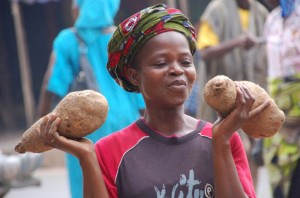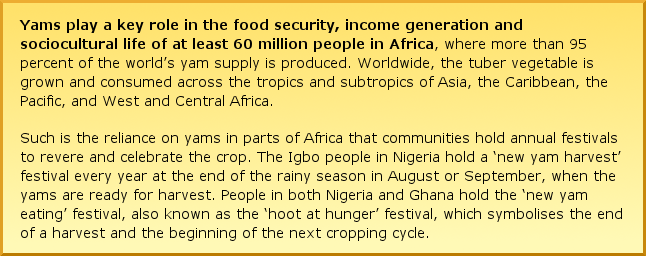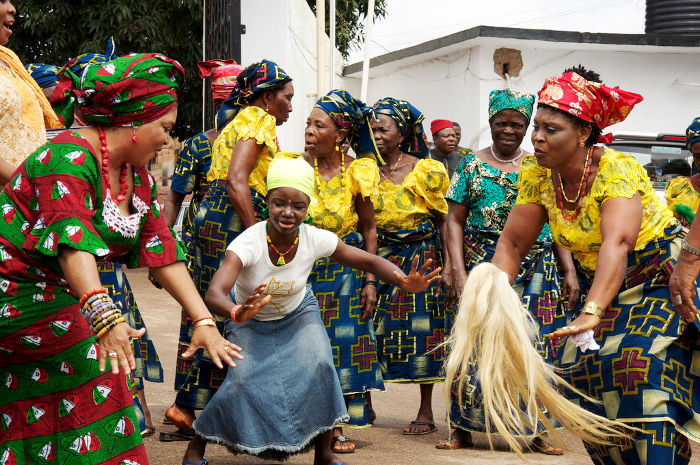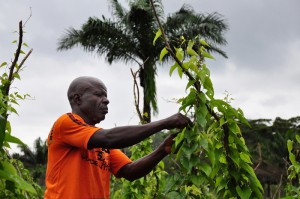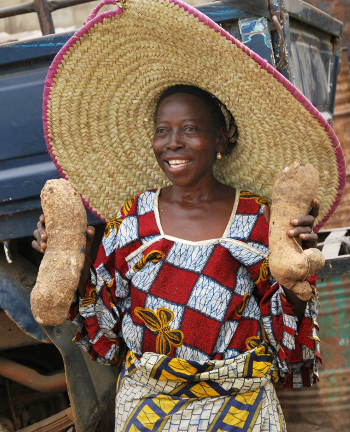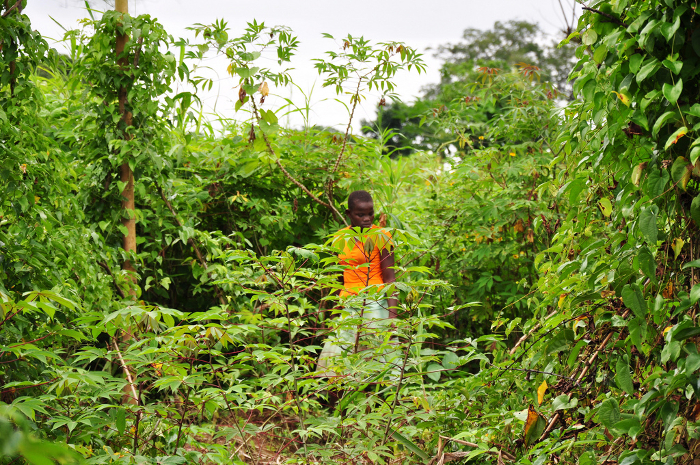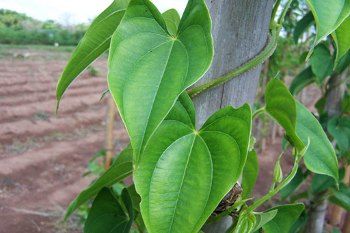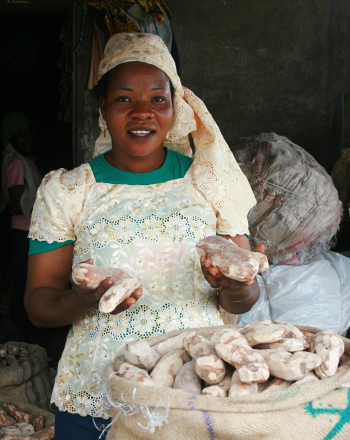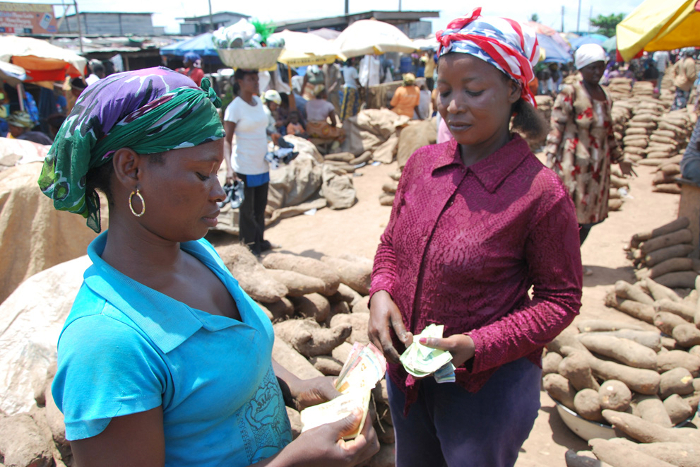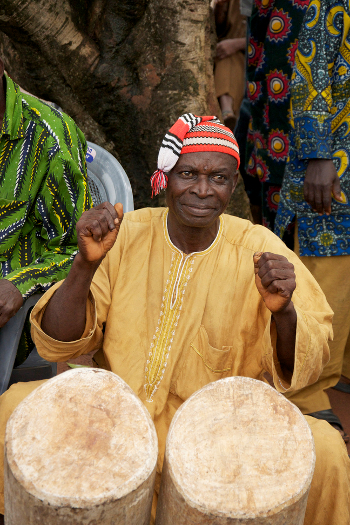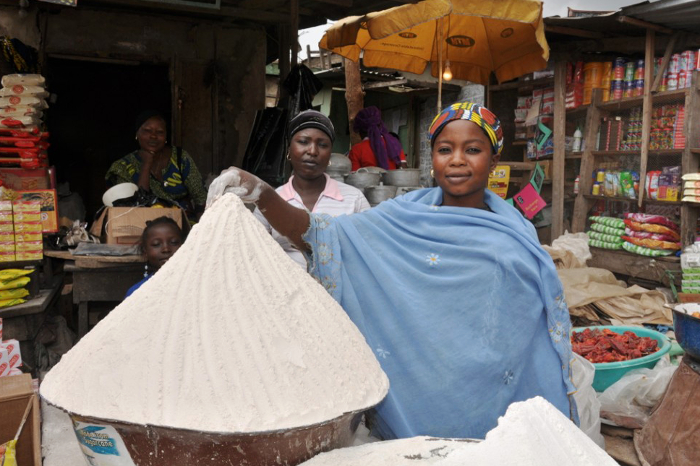Yam production in West Africa is plagued by unsustainable and suboptimal practices. Most farmers continue to grow local varieties that produce poor yields – and also lack aesthetic qualities that appeal to consumers, such as smooth skin and elegant tuber shape.
For a better future and a sustainable food supply, farmers need access to improved yam varieties that can tolerate changes in the climate and environment, as well as resist pests and diseases. Adopting new practices will also help farmers to increase their yields.
Despite the importance of yams in West Africa, breeding efforts for improved varieties have been limited for a number of reasons. One is that local yam cultivars have different names in different communities, making germplasm management and research difficult. Another obstacle is the constraints on yam growth – the plants have a long growth cycle and are highly susceptible to pests and diseases, poor soil, weeds and drought.
Unique collaborations get yam research rolling
In 2004, the CGIAR Generation Challenge Programme (GCP) recognised the need to provide resource-poor farmers in West Africa with yam varieties that combine high yields with drought tolerance, pest and disease resistance, and good tuber quality. The Programme was created to advance plant genetics for 21 crops, with a view to improving the resources and capabilities of local breeders in developing countries. Yams were one of the crops that received funding for the first half of the 10-year Programme.
Robert Asiedu, Principal Investigator for GCP’s project assessing the genetic diversity of yams in West Africa, says the Programme improved yam breeding through its unique collaborations.
“The work was brief but the partnership arrangement was useful,” says Robert, who is Director of Research for Development at the International Institute of Tropical Agriculture (IITA), based in Nigeria.
His GCP-funded team included researchers from Centre de coopération internationale en recherche agronomique pour le développement (Agropolis–CIRAD; Agricultural Research for Development) in France, the International Potato Center (CIP) headquartered in Peru, the International Centre for Tropical Agriculture (CIAT) based in Colombia, the International Crops Research Institute for the Semi-Arid Tropics (ICRISAT) headquartered in India, Chile’s Instituto de Investigaciones Agropecuarias (INIA; Agricultural Research Institute), and the United States Department of Agriculture, plus experts in genome profiling and genetic analysis from Diversity Arrays Technology (DArT) in Australia. DArT provided high-throughput genotyping services that helped to profile yam’s genome.
Andrzej Kilian, DArT’s founder and director, says: “My company had a range of interactions with GCP, and I hope we had some positive impact on the outcomes.”
The researchers used molecular breeding tools – simple sequence repeat markers, or SSRs – to assess the genetic diversity of more than 500 yam accessions from Benin, DR Congo, Côte d’Ivoire, Equatorial Guinea, Gabon, Ghana, Nigeria, Sierra Leone and Togo. The assessment was a huge step forward in expanding the scientific knowledge of yam genetics, and ultimately in identifying suitable material for use in breeding programmes.
IITA research scientist Maria Kolesnikova-Allen, also funded by GCP, says the yam work had two main objectives.
“The primary focus of the first projects on yams involving molecular markers was to assess genetic diversity among yams originating from different West African countries and to find relationships between species. This information is important for future breeding and conservation efforts,” she says.
“Also, we were interested in confirming the use of molecular markers for analysis of yams and their potential use in breeding programmes.
“By confirming their usefulness in yam studies, we have offered a robust tool set for further studies on this crop.”
As a result of the research, she says, “more knowledge and understanding has been achieved in terms of the genetic structure of yam populations in West and Central Africa, providing breeders with important knowledge for accessions selection to be included in breeding programmes.”
The genetic information that has been generated for yams will directly benefit countries in West Africa, according to Maria, “especially with IITA being positioned in the middle of the region and providing expert advice and dissemination of this information to local breeders and farmers.”
As part of her GCP-supported work, Maria supervised West African PhD students Jude Obidiegwu from Nigeria and Emmanuel Otoo from Ghana. Jude, a researcher at the National Root Crops Research Institute (NRCRI) in Nigeria, was responsible for GCP’s work on the genetic diversity of yams. His PhD assessed the genetic diversity of the West African yam collection.
African researchers carry GCP torch forward for yams
Jude is an example of how GCP focussed on fostering a base of experts on the ground in the countries where yams play an important role in people’s lives.
He was a participant in GCP’s Plant Genetic Diversity and Molecular Marker Assisted Breeding workshop held in Pretoria in June 2005. There he learned genomic DNA extraction methods, genetic and quantitative trait locus (QTL) mapping, development of core collections, and scientific proposal writing.
“Our students at PhD level from Nigeria and Ghana were the main drivers of the projects at laboratory and field experiments level,” says Maria.
“Being involved in the projects allowed them to gain international exposure in their respective research fields and later advance their scientific career, becoming fully fledged yam scientists in their own right.
“If there be any hope of applying advanced genetics and genomics tools to the improvement of yam, it is researchers like Jude who will be the foot soldiers of that work in Africa.”
Maria feels there are strong foundations for further development of yam’s genetic resources after GCP’s sunset at the end of 2014.
“I would like to hope the future is bright,” she says. “As programmes for reducing hunger and poverty are multiplying and gaining momentum worldwide, I am sure the research on staple crops will be given much-needed financial support.
“I strongly believe in a partnership approach,” she maintains, drawing an analogy between GCP’s focus on crop genetics and the Human Genome Project that involved more than 300 partners collaborating between 1990 and 2003 to identify, map and sequence the human genome.
Robert agrees, forecasting that: “New projects will raise the capacity for yam breeding in West Africa by developing high-yielding and robust varieties of yams preferred by farmers and suited to market demands.”








